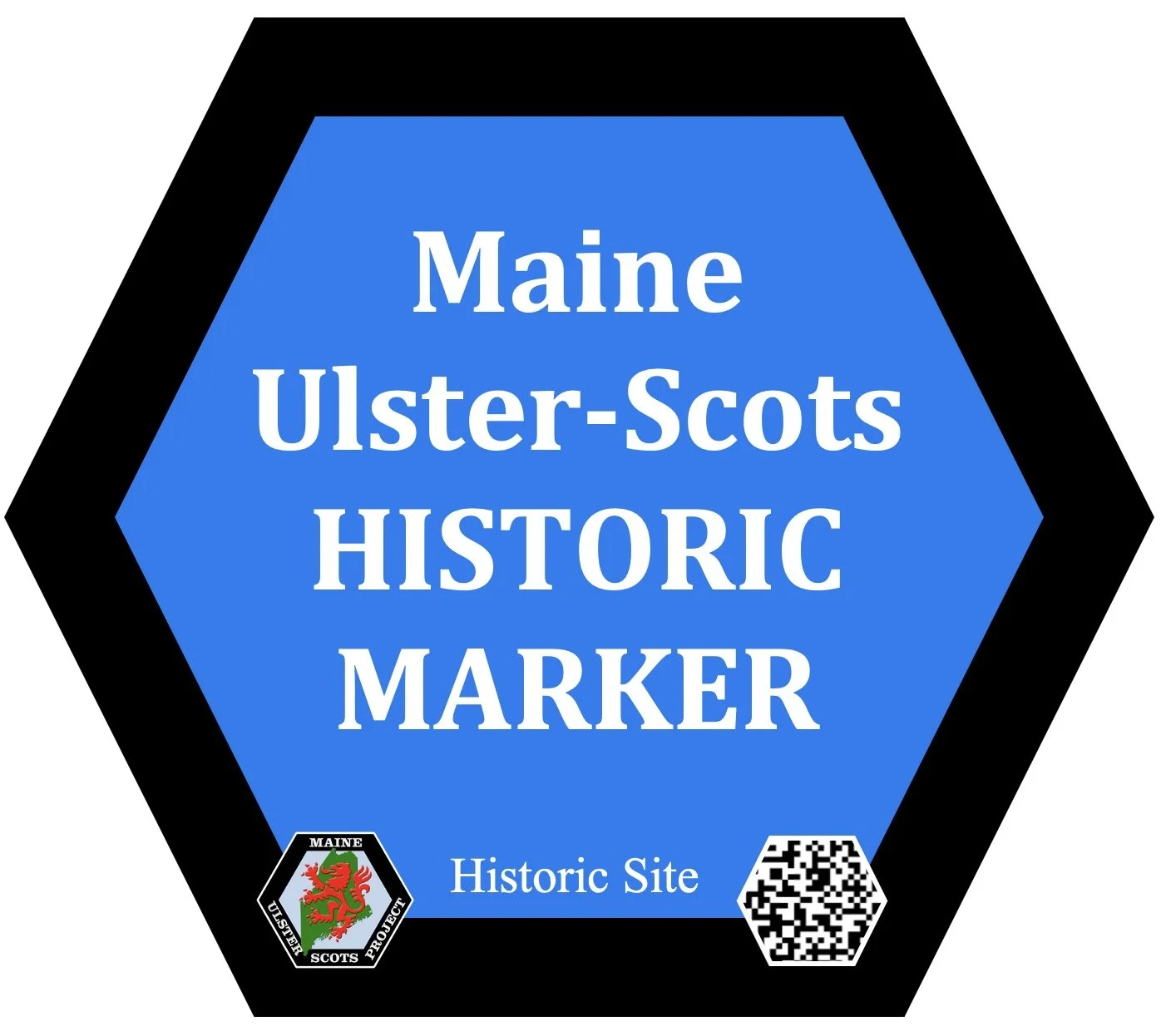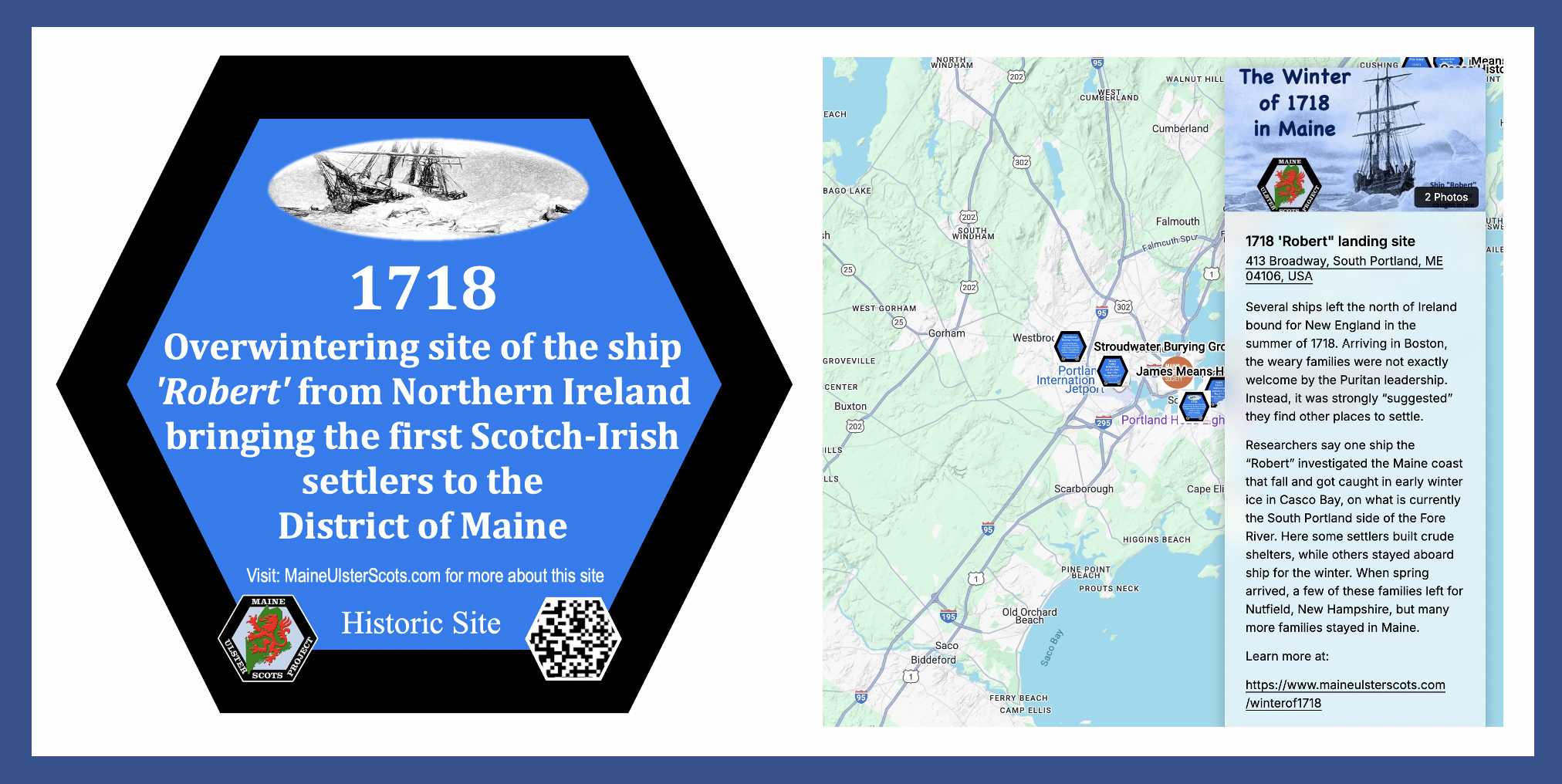PURPOSE AND GOAL OF THE PROJECT:
Create a virtual Heritage Trail of “Point of Interest” locations important to the rich history of Maine and the Ulster-Scots including an interactive map available on our website with narratives, pictures, and video of each location.
Create a program of researching and installing a “Historic Marker” at some of the physical locations on the map to identify the site and guide the public to the Heritage Trail webpages for in-depth information about the site.
Over the coming months in 2026, follow our progress on Facebook and return often to our website. If you have suggestions of locations in Maine of significant Scots-Irish history, please contact us at: info@MaineUlsterScots.com.
Examples of potential POINTS OF INTEREST:
First Settlers Cemetery on the shore of Casco Bay still named “Simonton Cove”, named for the original 1718 Simonton family from the Strabane area of Ulster. Several of the Scot-Irish settlers that came from Northern Ireland into Casco Bay in the late fall of 1718 are buried here including Ann Douglas Simonton. Learn more at: https://www.maineulsterscots.com/simontononcascobay
In the spring of 1770 Belfast was settled by Scots–Irish families from Londonderry, New Hampshire. Legend has it that the name Belfast, after the Northern Ireland city, was chosen by a coin-toss. Fear of British attack led these original proprietors to abandon the settlement during the American Revolution, but they returned in the 1780s to build a vibrant, prosperous outpost that would become the market center for the outlying area. Learn more at: https://belfastmuseum.org/history/
Examples of potential HISTORIC MARKERS:
Several ships left the north of Ireland bound for New England in the summer of 1718. Arriving in Boston, the weary families were not exactly welcome by the Puritan leadership. Instead, it was strongly “suggested” they find other places to settle.
Researchers say one ship the “Robert” investigated the Maine coast that fall and got caught in early winter ice in Casco Bay, on what is currently the South Portland side of the Fore River. Here some settlers built crude shelters, while others stayed aboard ship for the winter. When spring arrived, a few of these families left for Nutfield, New Hampshire, but many more families stayed in Maine. Learn more at: https://www.maineulsterscots.com/winterof1718
The Ulster-Scots Means family lived in a log home near the shore of Maquoit Bay. The small home was occupied by seven people
On May 10, 1756, in the early days of the “French and Indian War,” the homestead farm of Thomas Means was attacked by a party of Native Americans. The raid resulted in the deaths of two members of the Means family, another wounded and one taken captive. One member of the raiding party was killed or wounded (reports differ). Learn More: https://www.maineulsterscots.com/means-family-homestead
The Casco History Lab at Wolfe’s Neck Center, currently in development, is a unique public resource connecting the rich history, landscapes, natural resources, and built environment of Wolfe’s Neck Center’s campus and its Harraseeket River environs. The History Lab will be directed by anthropologist and curator Tilly Laskey and housed in a 1750s saltbox-style house on the National Register of Historic Places, part of a working farm then as now. Learn more at: https://www.wolfesneck.org/research/casco-history-lab/
If you have suggestions of locations in Maine of significant Scots-Irish history, please contact us at: info@MaineUlsterScots.com.








